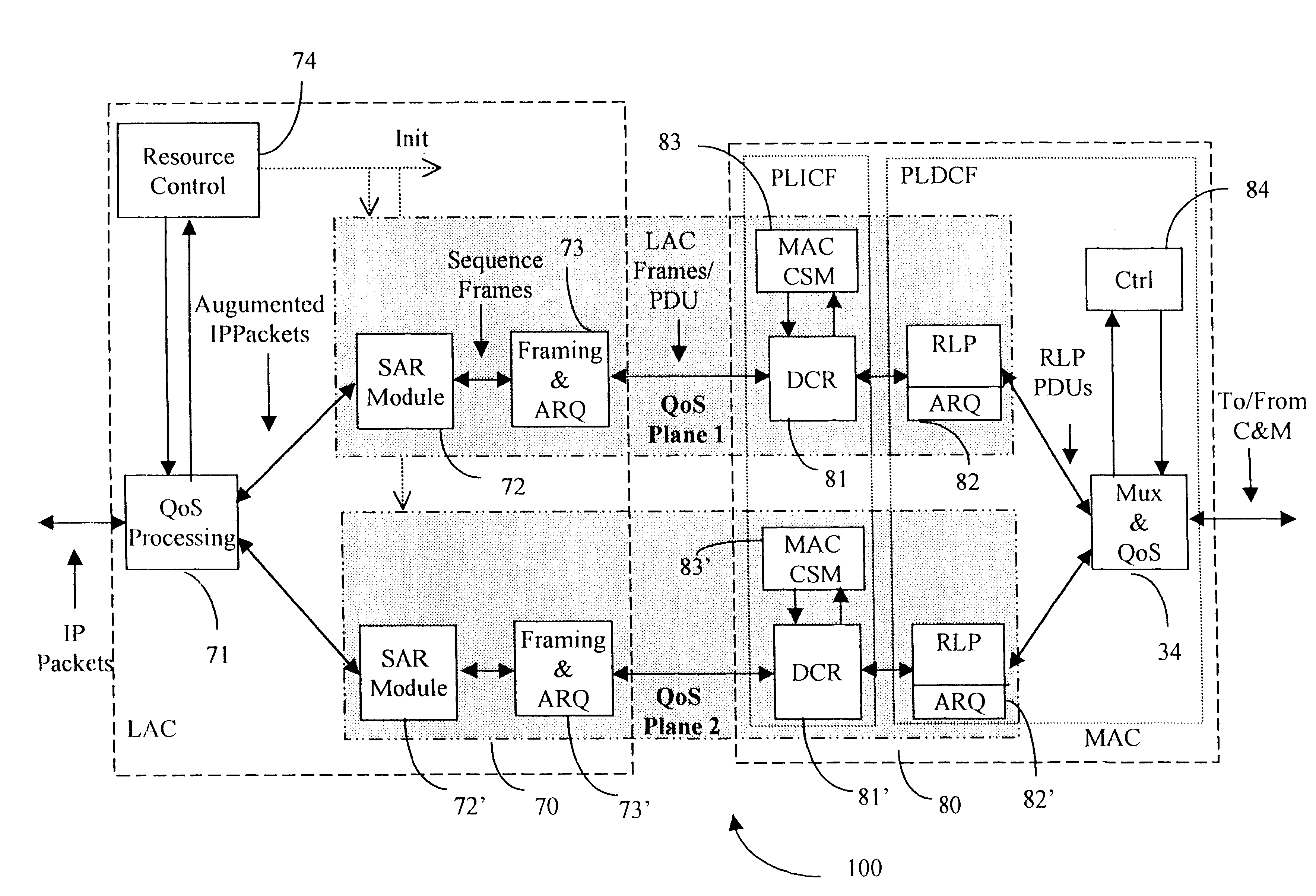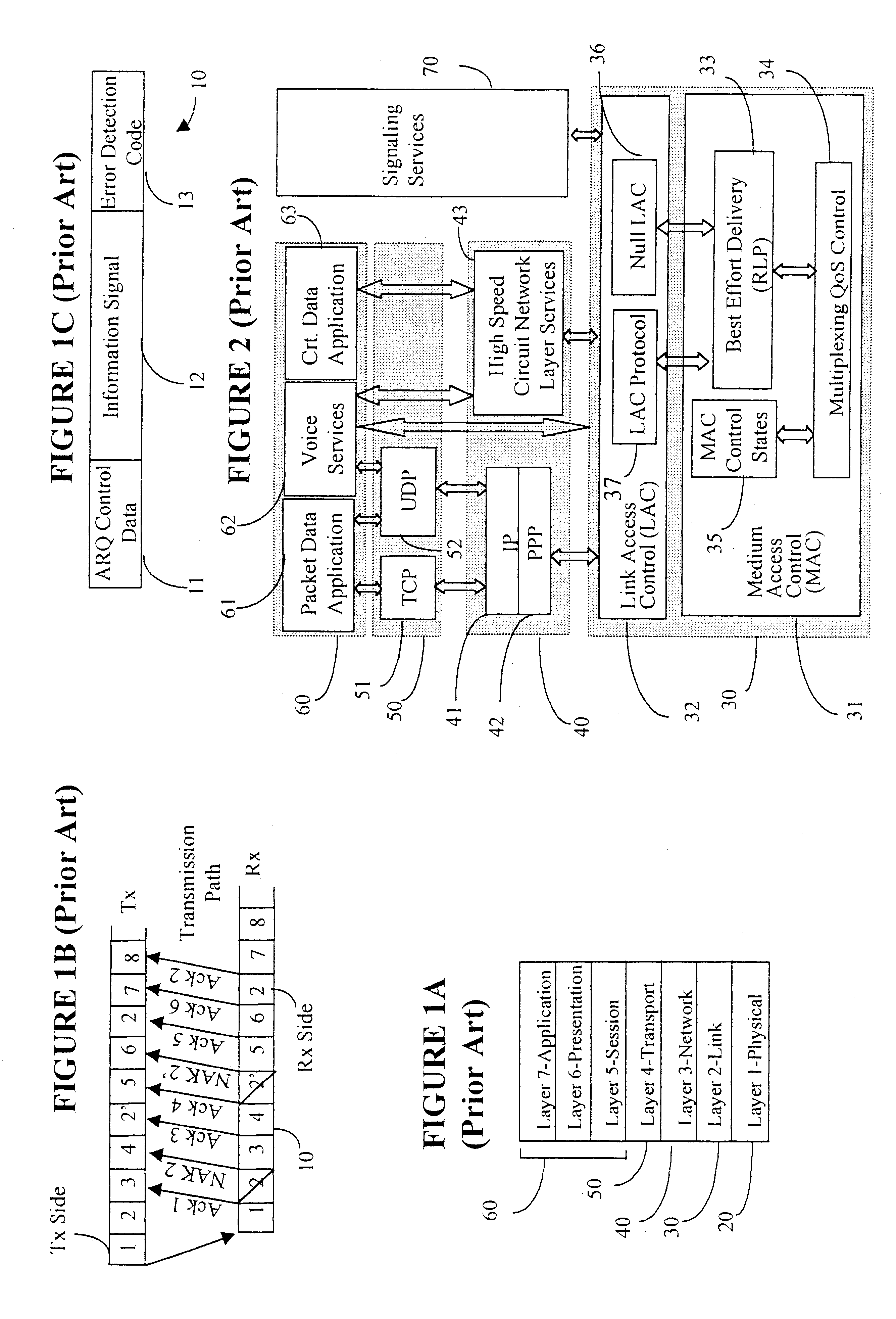Data link control proctocol for 3G wireless system
a data link control and wireless system technology, applied in the field of link layer protocols, can solve the problems of tcp data packet loss, no longer valid assumptions, and significant differences in the way these networks opera
- Summary
- Abstract
- Description
- Claims
- Application Information
AI Technical Summary
Problems solved by technology
Method used
Image
Examples
Embodiment Construction
Throughout the description the term "Quality of Service" (QoS) refers to network layer protocol QoS which includes "best effort", "expedited delivery", and "assured delivery". A Class of Service (CoS) defined at the DLC layer includes a set of services that have substantially the same QoS requirements.
FIG. 1A shows the International Organization for Standardization (ISO / OSI) reference model in general, and was described above. The layers are denoted with 20 (not shown), 30, 40, 50 and 60.
FIG. 1B shows a typical data transmission, using Automatic Repeat Request (ARQ), and FIG. 1C shows a transmission frame structure for a conventional ARQ system. FIG. 1B illustrates a transmitter Tx on the transmitting side of a wireless transmission system, a receiver Rx on the receiving side, and the transmission path. The transmission path is a wireless transmission channel established between the transmitting and receiving sides.
The ARQ frame 10 of FIG. 1C comprises client information, denoted "i...
PUM
 Login to View More
Login to View More Abstract
Description
Claims
Application Information
 Login to View More
Login to View More - R&D
- Intellectual Property
- Life Sciences
- Materials
- Tech Scout
- Unparalleled Data Quality
- Higher Quality Content
- 60% Fewer Hallucinations
Browse by: Latest US Patents, China's latest patents, Technical Efficacy Thesaurus, Application Domain, Technology Topic, Popular Technical Reports.
© 2025 PatSnap. All rights reserved.Legal|Privacy policy|Modern Slavery Act Transparency Statement|Sitemap|About US| Contact US: help@patsnap.com



